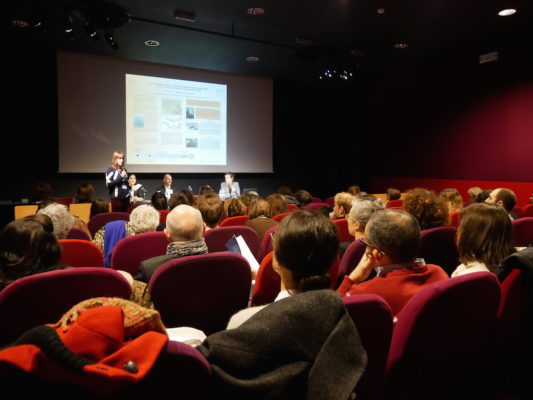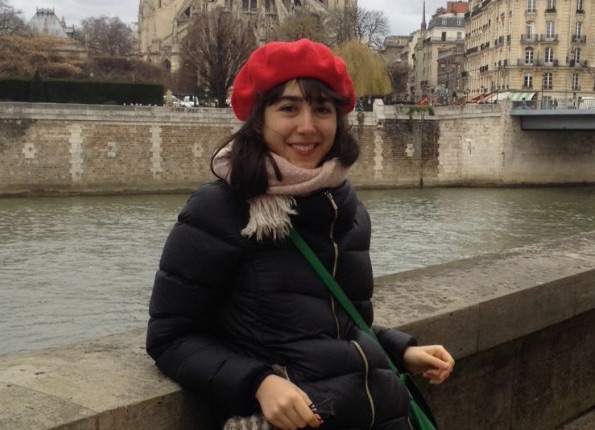Search
To search for an exact match, type the word or phrase you want in quotation marks.
A*DESK has been offering since 2002 contents about criticism and contemporary art. A*DESK has become consolidated thanks to all those who have believed in the project, all those who have followed us, debating, participating and collaborating. Many people have collaborated with A*DESK, and continue to do so. Their efforts, knowledge and belief in the project are what make it grow internationally. At A*DESK we have also generated work for over one hundred professionals in culture, from small collaborations with reviews and classes, to more prolonged and intense collaborations.
At A*DESK we believe in the need for free and universal access to culture and knowledge. We want to carry on being independent, remaining open to more ideas and opinions. If you believe in A*DESK, we need your backing to be able to continue. You can now participate in the project by supporting it. You can choose how much you want to contribute to the project.
You can decide how much you want to bring to the project.

The rich debate on art and gender is still growing and now seems to touch group shows of works by women artists, the core theme of the international symposium WAS – Women Artists Shows·Salons·Societies. Group Exhibitions of Women Artists 1876-1976, held on 8 and 9 December at the Jeu de Paume in Paris.
The Artl@s (École normale supérieure) research laboratory in Paris and AWARE (Archives of Women Artists, Research and Exhibitions) association hosted the first public session of a research programme dedicated to studying exclusively female art organisation initiatives. Having been promoted since the late nineteenth century along with the first movements for the emancipation of women, these initiatives arose to combat discrimination, affirm the status of women artists, bring visibility to their work and construct their history outside male circles.
The infra-representation of these exhibitions, associations and groups in the traditional historiography of art prompted us to begin by producing a descriptive catalogue of these shows. In a second phase of the project the catalogue will enable us to reflect critically on the specific history of the phenomenon, addressing issues such as the social, cultural and institutional conditions in which it developed, in order to draw conclusions concerning its critical reception and its symbolic repercussion on the process of emancipation of women artists.
The first results of the research, obtained through archival work and reconstructions, as most of the documentation has been lost, pooled together factual information on artists, exhibitions, corpuses of works, funding, institutional support and media coverage to position these unknown cases within the History of Art.

The discussion, that counted on renowned specialists such as Spanish art historians Juan Vicente Aliaga and Patricia Mayayo, included communications on subjects as diverse as the Feminine Salon of Contemporary Art held in Barcelona in the sixties and seventies, the Women Artists’ Salon of Chicago de 1937 to 1952, or the exhibition of works by women in the Union of Artists and Painters staged in Moscow in December 1914.
Over and above the specificity of each context, most of the speakers held similar opinions on several points. In the first place, they upheld the need for diverse strategies of emancipation and for the construction of subjectivity by modern female artists, not all of whom were interested in embracing feminism although they did see eye to eye on the need for spaces of meeting and exchange to contest the term ‘femininity’ and its ideological connotations. Secondly, they coincided in considering that the interval between the two most studied moments, i.e., the interwar period and the seventies, despite being empty in historiographical terms, was very productive and intense in female artistic activity. Last but not least, they agreed on the importance of continuing to raise the visibility of women artists. Marginalised and barely represented even today, they are still the topic of discussion at such symposiums and will continue to be in future.

Beatriz Sánchez Santidrián had always wanted to be a biologist but she grew up amidst books, records, films and exhibitions; a few days before enrolling at university she decided that what interested her most was Art History. Dreaming of the bohemian intellectuals of postwar Paris, she settled there. She hasn’t run into Beauvoir or Cocteau, but she’s still there. Still looking.
"A desk is a dangerous place from which to watch the world" (John Le Carré)